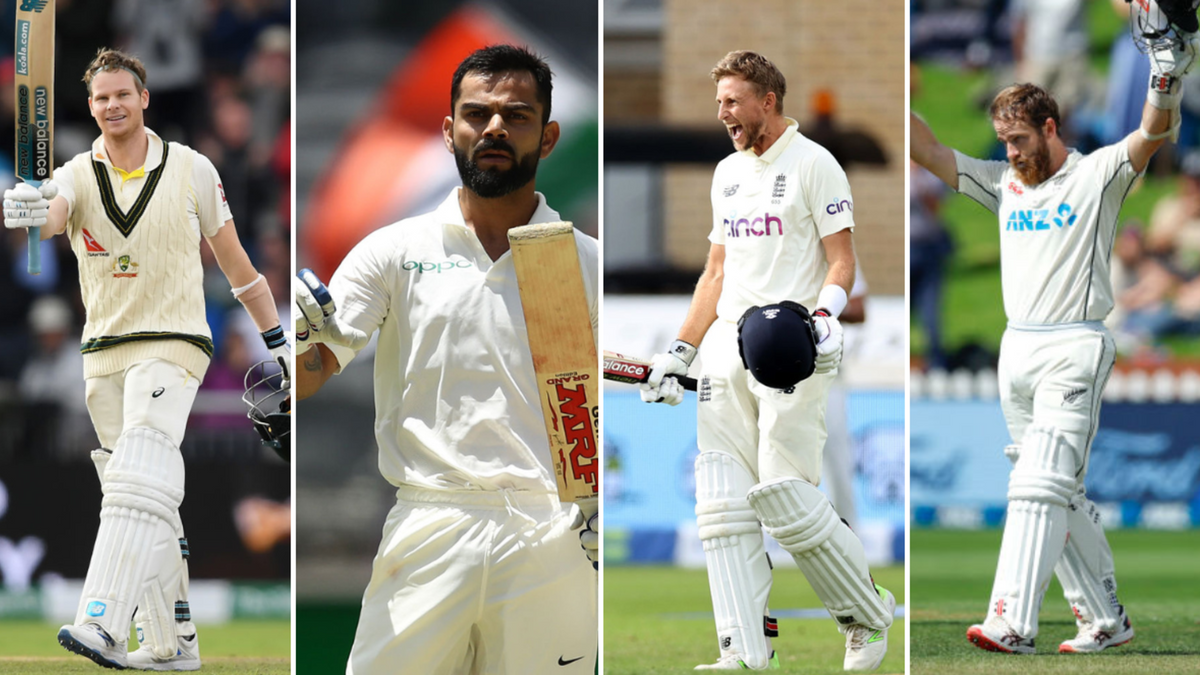
Naman Agarwal delves into the changing fortunes of the Fab Four in Test cricket.
Subscribe to the Wisden Cricket YouTube channel for post-match analysis, player interviews, and much more.
December 2018. The grand Optus Stadium in Perth is hosting its first Test match. India are on the mat at 8-2. Out struts Virat Kohli with an air of confidence that you’d normally associate with one of the best batters in the world. Oh wait, he is one of the best batters in the world. Unsurprisingly, he scores a century and celebrates with a ‘my-bat-does-all-the-talking’ gesture.
After that game, his Test career runs stand at 6508. Exactly the same as Joe Root at that point in time. Steve Smith is at 6,199 runs and Kane Williamson is at 5815.
By that time, the end of 2018 that is, the Fab Four has been in existence for the last four years, a term coined by the late Martin Crowe in 2014 to earmark four potential batting superstars of the future. From friend groups to big media houses, everyone is constantly tracking the movements of this Fab 4 on the ladder of Test cricket. There are wide-ranging debates with different caveats and filters thrown in to conveniently reach the conclusion that one wants. However, there is somewhat of an acceptance that Kohli and Smith are slightly ahead of Root and Williamson.
Fast forward to 2023, and a lot has changed. Root has unlocked a new level, Bazballing his way through Test cricket one reverse-scoop after the other. Williamson is missing more games than he is playing, but when he is playing, he is scoring big, daddy hundreds. Smith, while still producing a decent volume of runs, has fallen down to more mortal levels of scoring from his previously robotic standards, and Kohli, well, Kohli has had a steep and long decline, nearly as steep and long as his rise to the top was in Test cricket.
Joe Root
The coronavirus pandemic proved to be the inflection point in the Test careers of the Fab 4. Since cricket began post-pandemic in 2020, Root has been head and shoulders above all other batters in terms of run-scoring in Test cricket. He has scored more than 3,500 runs in this period with the next highest scorer being Marnus Labuschagne with just over 2,000 runs.
He has made a sparkling return to top form in limited-overs cricket recently. However, apart from his century against Australia on the flat track of Ahmedabad, he has nothing to show in Test cricket in the last couple of years. Both Kohli and Test cricket would like that to change soon.
The hierarchy of the Fab 4 has forever fluctuated. But it has rarely been in the state it is now. Root is the No.1 ranked Test batter in the world. Williamson is averaging nearly 80 in the last three years, while Smith and Kohli have dropped off by varying degrees.
Root and Williamson are 32 and have a couple of years over Smith and Kohli. Perhaps that has played a part in the trajectories they have had. Perhaps Root and Williamson will suffer similar downturns as the other two as they get older. Whatever happens, the Fab 4 has lived up to the expectations of the late Martin Crowe and are at different stages of their careers, no longer competing with each other.
It's like a group of four college friends that have enjoyed some of their best years together, but have now graduated and drifted apart with each going on their respective paths. Everyone likes a reunion and if it happens, it would be great. But it rarely does.








